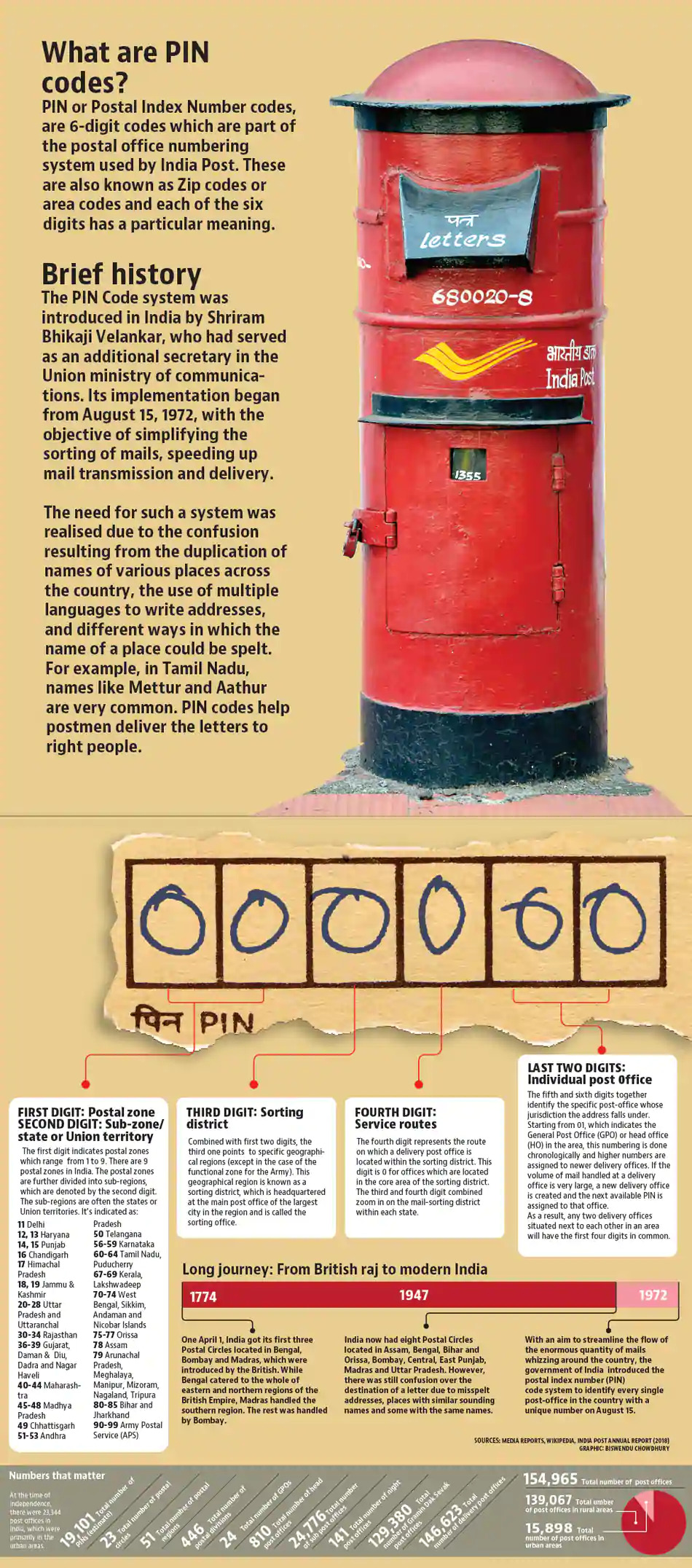ForumIAS announcing GS Foundation Program for UPSC CSE 2025-26 from 19 April. Click Here for more information.
ForumIAS Answer Writing Focus Group (AWFG) for Mains 2024 commencing from 24th June 2024. The Entrance Test for the program will be held on 28th April 2024 at 9 AM. To know more about the program visit: https://forumias.com/blog/awfg2024
Contents
Source: The post is based on the article “Explained: History of the PIN code, which turns 50 this Independence Day” published in Indian Express on 16th August 2022.
What is the News?
The 75th Independence Day coincides with another milestone in the country’s history — it was on August 15, 1972, that the Postal Index Number(PIN) was introduced in India.
As the PIN Code turns 50 this year, let us look at the history of PIN Code:
Why was the PIN Code introduced?

At the time of independence, there were 23,344 post offices primarily in urban areas in India. But, the country was growing rapidly, and the postal network had to keep pace.
The PIN code was then introduced to ease the process of mail sorting and delivery in a country where different places, often, have the same or similar names and letters written in a wide variety of languages.
How does the PIN Code work?
The PIN is made up of six digits. The first number indicates the postal region — Northern, Eastern, Western, Southern; and the number 9, which signifies the Army Postal Service. The second number denotes a sub-region, and the third represents the sorting district. The remaining numbers narrow the geography further to the specific post office making the delivery.
Who was the person behind the PIN Code initiative?
The person behind the initiative was Shriram Bhikaji Velankar, an additional secretary in the Union Ministry of Communications and a senior member of the Posts and Telegraphs Board.
Note: Shriram Velankar was also a Sanskrit poet of eminence who had been conferred the President’s Award for Sanskrit in 1996. One of his most important books of his was Viloma Kavya which is considered a literary masterpiece because it comprises verses in praise of Lord Rama when read from one side and, when read backwards, it transformed into verses dedicated to Lord Krishna.
How is the PIN Code still relevant?
In today’s world where emails have replaced letters, and WhatsApp, Instagram and other social media platforms have become means of communication, one may think that the ‘pin code’ does not hold the same relevance.
However, as more and more e-commerce platforms, couriers and food delivery services set up shop, the pin code is still required to avoid duplication and identify the correct address.




